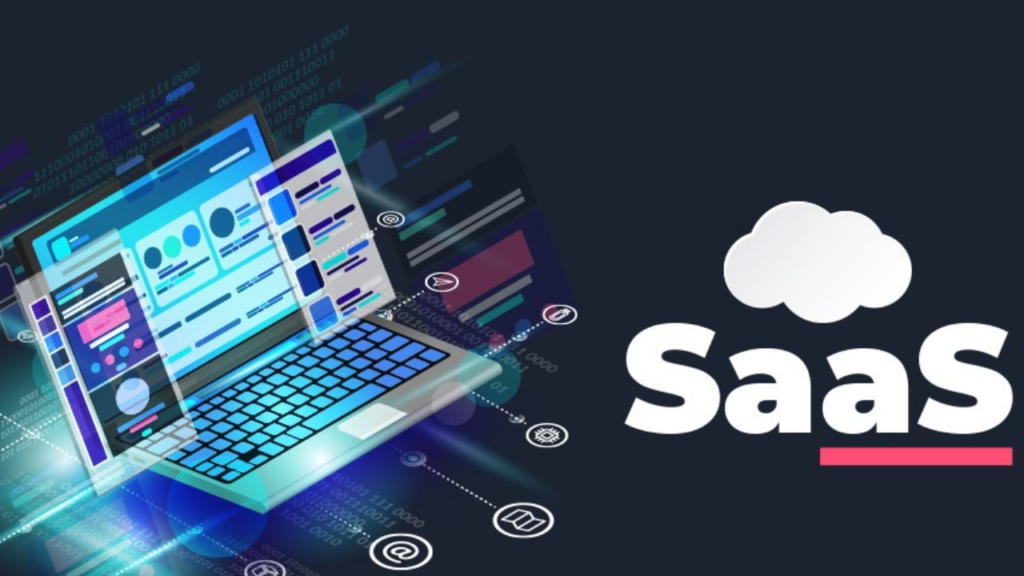As more and more enterprises are adopting cloud solutions for their daily operations, SaaS also bloomed in this regard. SaaS (software as service) is a software deployment architecture in which a third-party vendor creates applications on the cloud infrastructure according to your audience and business needs and makes them available to a wide range of customers. Anyone with internet access and a suitable web browser can access your business solution rather than installing an application or being OS dependent. According to McKinsey Many businesses can help themselves using SaaS, some may need a third-party vendor to help with security, integrating needs, or customization. To maintain and update your cloud services regularly, you need to have basic knowledge of commonly used components of the cloud.

Follow the latest trends in SaaS for improved app performance and better client engagement. Some of the notable SaaS trends are listed below:
Adopting Artificial Intelligence and Machine Learning
AI and ML are the mega-minds now in the industry. The continuous training and testing of AI bots over the user engagement on your service helps your enterprise track the user engagement and what products they like and don’t. AI and ML improve outcomes rather than quantity. To explain it better, AI emphasizes increased client efficiency. AI-based APIs include suggestions, recommendations, and product lists to enhance your product’s efficacy and improve client visits.
Mobile First SaaS
A mobile-first approach generally works with the concept in which the developers first build a mobile version of the software alternative to starting with the desktop version. This is beneficial if we see the big picture. The PC version of the software takes much time and detail that won’t be necessary for the mobile version. The goal is to make the software user-friendly, so the mobile version should not have unnecessary clutter associated with it.
Better Customer Experience
Every enterprise is working to make its products user-friendly and accessible. SaaS elevates the user experience to a whole new level. Ease access over the internet; availability is the core of any business experience. Cloud enterprises are easy to maintain as the distributed servers never go offline, plus management can also be handed over to a third-party vendor.
Vertical SaaS Products
This enables you to have business-specific features. Cloud services allow you to capture, store and examine data across several levels of your business. With options like vertical SaaS, you can gain precious customer knowledge. Enterprise-specific data is more helpful when exploring functional areas of your company, and any business would appreciate that level of specificity. With these small details, vertical SaaS vendors can help their clients and provide keen insight into essential business decisions and how to increase their value as business partners.
Micro-SaaS Applications
Micro-SaaS enables the audience to have niche-specific services. A more advanced version of SaaS services. The client can have a monthly/weekly subscription according to their needs and add value to their service. Micro SaaS applications are primarily self-funded and customized according to business needs with no outside investors. This implies that you’ll never work under the stressful boom of finances and loans. Whether they want to do it independently or hire a small micro-team is completely client-dependent. How you promote your service or use vendor management is up to you.
SEO for SaaS
SEO can be the fuel to promote your SaaS product. If you have created an exceptional product and no one knows about it, what’s the gain? But don’t worry because you can advertise your business and get the attention you want from your target audience by using SaaS-specific SEO plans. People can remember your brand more when you are one of the top search results, increasing word-of-mouth marketing.
Collaboration Software
SaaS collaboration solutions are simple to organize and maintain, and they require little more than a license activation to get started. No software downloads or expensive hardware installations are required. Cloud-based business solutions are accessible from any web browser, meaning you operate them remotely. This is especially important for global organizations as cloud solutions are accessible 24/7, so you don’t have to worry about time zones or uptime. Your files are automatically synced and available from any device while using SaaS on the cloud.
Low-code or No-code SaaS Products
Low-code or No-code products are popular because they require little to no programming experience to create mobile applications. They allow simple drag-drop operations and are efficient and time-saving. Now businesses can quickly execute or transition to an elegant system using SaaS-based products.
Conclusion
In conclusion, SaaS is the future of your online business presence. The more quickly you understand this, the better you will prepare for digitalization. If you want more information about SaaS-based products, you can read more blogs on our website! For more knowledge read our blogs on our website Auxin.io.






